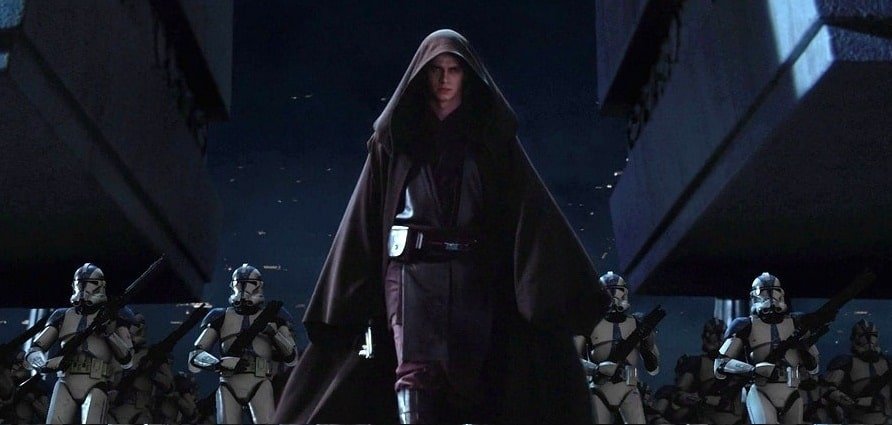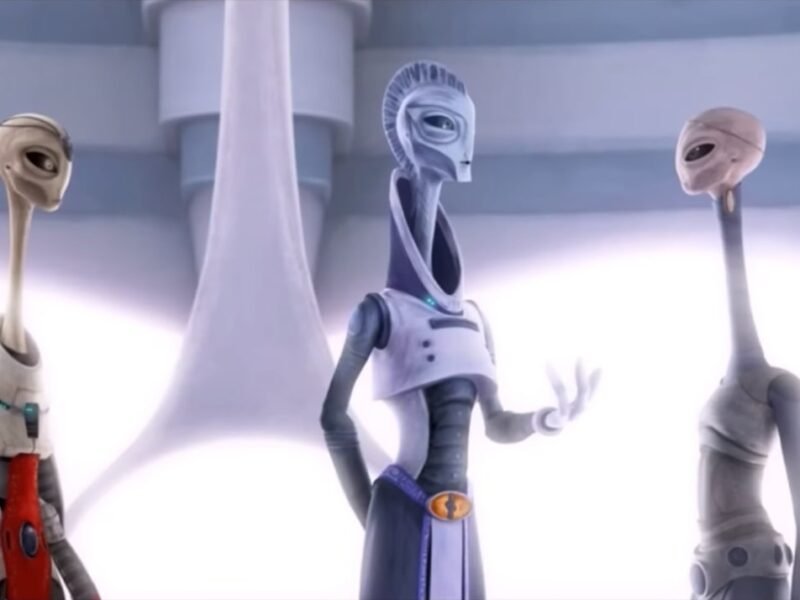1. What is Order 66?
Order 66 was a highly classified contingency directive that labeled all Jedi as traitors to the Galactic Republic, thereby authorizing their immediate execution by the Grand Army of the Republic. The order was embedded into the minds of clone troopers through behavioral modification biochips implanted in their brains, making it nearly impossible for the clones to refuse the command to betray their Jedi Generals.
The Kaminoan scientists responsible for designing the clone troopers believed it would only be used as a contingency measure against rogue Jedi. However, secretly, Order 66 was the Sith’s plan to bring about the long-desired downfall of the Jedi Order.
During the Clone Wars, the Sith’s plot progressed largely unnoticed until a premature activation of Order 66 led to the death of General Tiplar. She was killed by Tup, a defective clone whose malfunctioning biochip caused him to turn on his Jedi commander. This incident prompted ARC trooper Fives to investigate, suspecting it was part of a Separatist conspiracy against the Republic.
On the galactic capital Coruscant, Fives discovered that the biochips conditioned clones to become hostile toward the Jedi. He also uncovered, to some extent, the involvement of Supreme Chancellor Sheev Palpatine in the conspiracy and even attempted to assassinate him. Fives shared what he had learned with his Jedi superior, Anakin Skywalker, but before he could provide proof, he was killed by clone shock troopers from the Coruscant Guard.
The Sith’s plan continued unabated for the rest of the war, though the Jedi High Council became increasingly suspicious of the Chancellor’s intentions. In 19 BBY, a group of Jedi Masters attempted to arrest Palpatine after discovering his true identity as the Sith Lord Darth Sidious. When their efforts failed, Palpatine used the incident to frame the Jedi Order for treason and instructed the clone army to execute their Jedi commanders, in accordance with Order 66.
Across the galaxy, thousands of Jedi were slain by their own soldiers, while Palpatine’s new apprentice, the Sith Lord Darth Vader—formerly Jedi Knight Anakin Skywalker—led the 501st Legion in a direct assault on the Jedi Temple on Coruscant.
With a few exceptions, such as Grand Master Yoda, Jedi Master Obi-Wan Kenobi, former Padawan Ahsoka Tano, Padawans Kanan Jarrus and Cal Kestis, and Jedi Knight Cere Junda, the Great Jedi Purge was largely carried out with the initial activation of Order 66. Even after the initial massacre, Order 66 remained in effect, meaning that all Jedi, or even those suspected of being Jedi, were to be executed on sight.
Sidious would go on to consolidate his power, becoming Emperor of the Galactic Empire and ruling for decades until the prophecy of the Chosen One came to fruition, bringing an end to the Sith’s rule and restoring balance to the Force by 4 ABY.
2. Conditioning the Clones for Order 66
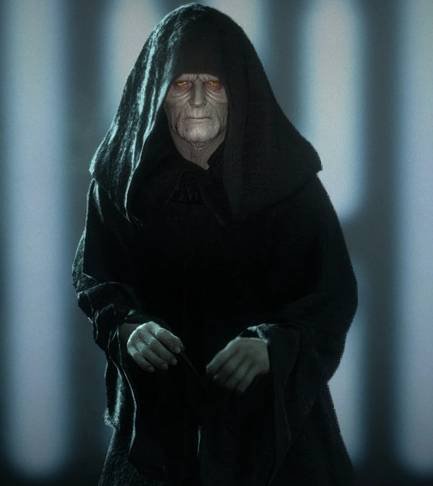
The clone troopers were conditioned to follow Clone Protocol 66 during their creation process. Every clone received a behavioral modification biochip, which could be remotely triggered via voice command. For example, Supreme Chancellor Sheev Palpatine needed only to tell the clones to execute Order 66, and they would comply immediately.
When activated, the biochip ensured absolute obedience in a clone, erasing any pre-existing biases or beliefs and instilling complete loyalty to Palpatine. The order also compelled clones to view the Jedi as dangerous traitors who had to be eradicated, regardless of the cost, even if it meant their own deaths.
In certain rare cases, a clone could resist the chip’s control and hesitate in carrying out the order. However, resisting the chip’s influence required a tremendous amount of effort, and sustained resistance could only be maintained if the biochip was removed, as seen in the case of Clone Commander Rex, who needed external assistance for the chip’s removal.
A few clones were naturally immune to the order, though such instances were exceedingly rare. Clones with genetic defects had a higher likelihood of being immune to the order because their mutations interfered with the biochip’s functioning.
However, as long as the chip remained inside a clone’s head, it posed a risk, since external factors, such as head injuries, could still activate it. Any refusal to follow Order 66 was considered an act of treason, and any clone who disobeyed the order was also subject to execution.
3. The Sith’s Secret Plot and Preparations
3.1 The Sith’s Thousand-Year Revenge Plan
The Sith, a group of dark side Force-users, were originally formed by fallen members of the Jedi Order following a conflict known as the Hundred-Year Darkness. After many battles, the Jedi eventually triumphed, seemingly wiping out the Sith in the final decisive war. However, one Sith Lord survived: Darth Bane. Believing that the Sith had fallen due to internal power struggles, Bane instituted a rule known as the Rule of Two, where a Sith Lord would pass their knowledge to only one apprentice, who would then have to kill their master to succeed them.
For almost a thousand years, the Sith operated in hiding, plotting their revenge against the Jedi. Eventually, a human male from Naboo, named Sheev Palpatine, became the apprentice of Darth Plagueis and adopted the Sith title of Darth Sidious. He later assumed the mantle of Dark Lord of the Sith after murdering his master in his sleep.
In the public eye, Palpatine became a politician, serving as Naboo’s Senator and orchestrating the invasion of his homeworld, all as part of his strategy to be elected Supreme Chancellor of the Galactic Republic. Sidious aimed to exact the Sith’s revenge by annihilating the Jedi and transforming the ancient Republic into the Galactic Empire, orchestrating the onset of the Clone Wars to accomplish this goal.
In 82 BBY, Jedi Padawan Dooku, while on a mission to the planet Asusto with Jedi Master Lene Kostana and her Padawan Sifo-Dyas, had a vision through the Force of numerous possible futures during an encounter with the dark side cult known as the Presagers of Hakotei. One of the futures he saw included a version of Order 66, where Jedi Master Jor Aerith was killed by Clone Commander Crane. However, not everything Dooku foresaw in this vision would ultimately come to pass. Years later, Dooku left the Jedi Order, ultimately succumbing to the dark side and becoming the Sith Lord Darth Tyranus, the apprentice of Sidious.
3.2 Early Warnings of the Sith’s Scheme
Approximately ten years before the Clone Wars broke out, Jedi Master Sifo-Dyas commissioned the creation of the Republic’s clone army, having foreseen a future conflict. However, the Sith hijacked the project as part of their plan to destroy the Jedi. They had Sifo-Dyas killed by the Pyke Syndicate, and the true circumstances of his death were hidden from the Jedi. Count Dooku, under the guise of a Jedi, approached the Kaminoan cloners and provided them with the biochips that were implanted in the clones early in their growth process. These chips contained what the Kaminoans referred to as “Clone Protocol 66″—a command that, once activated, would ensure the clones’ unwavering obedience and prompt them to violently turn against the Jedi.
The Kaminoans, including Prime Minister Lama Su and Chief Medical Scientist Nala Se, believed that this protocol was a safeguard against Jedi who went rogue. Dooku, using the alias of his Sith name, also convinced them that the protocol and the chips had to be kept secret from the Jedi, claiming that this was in line with Sifo-Dyas’s wishes. The Jedi first learned of the clone army’s existence just before the Clone Wars when Jedi Knight Obi-Wan Kenobi tracked down the clone template, Jango Fett, to Kamino during his investigation into an assassination attempt on Senator Padmé Amidala.
Early in the war, after the Ambush on Rugosa, Jedi Grand Master Yoda, while meditating, had a brief vision of Jek, one of the clone troopers accompanying him to the moon, at the moment Order 66 was issued. In the vision, Yoda sensed Jek’s emotions shifting from disbelief and regret to an overwhelming compulsion to obey. However, Yoda’s general wariness toward Force visions, combined with his unease around the clones due to their genetically engineered obedience, prevented him from fully grasping the significance of the vision.
Before the Battle of Umbara, Jedi General Pong Krell had visions of Order 66. Having turned to the dark side, Krell used these visions to justify his attempt to sabotage the battle, hoping to become Dooku’s new apprentice. However, he was eventually captured by the 501st Legion and executed for treason, as the remaining Umbaran forces were seen as too great a risk to allow his escape.
At some point during the Clone Wars, Jedi Master Eno Cordova visited the Zeffo vault on Bogano, where he received a vision of the fall of the Jedi and the spread of the dark side across the galaxy. He then rushed back to Coruscant to warn the Jedi Council, presenting his findings. While the majority of the Council dismissed his claims, Cordova’s old friend Jocasta Nu believed him. She secretly entrusted him with a copy of her list of Force-sensitive children, procured from the Jedi Archives.

Towards the conclusion of the Clone Wars, Order 66 was nearly exposed when the biochip of clone trooper Tup malfunctioned, causing him to slip between his normal self and a trance-like state. While in the trance, Tup fatally shot Jedi Master Tiplar during the Battle of Ringo Vinda. The Republic was forced to halt their offensive to study Tup and understand what had occurred. Upon learning about Tup’s situation, Dooku and Sidious feared that Tup could lead the Jedi to uncover their true plan for the war, including the clone protocol. The Confederacy of Independent Systems attempted to kidnap Tup, but the Republic succeeded in bringing him to Kamino for further analysis.
3.3 Discovering the Dark Secrets of the Clone Army
The Kaminoans, hoping to conceal the existence of the protocol, studied Tup and claimed that a virus had caused him to kill General Tiplar. Advanced Recon Commando Fives—Tup’s closest friend in the 501st Legion—was skeptical of their explanation. He discovered a biochip inside Tup’s head, although Tup died shortly after the chip was removed. With the help of the medical droid AZI-3, Fives also found the chip inside his own head and had it removed for further examination. Together, they uncovered that every clone was implanted with a biochip.
The Jedi brought Fives to Coruscant for further investigation, where he came face-to-face with Palpatine and learned that the Chancellor was behind the plot. Palpatine framed Fives for an assassination attempt, discrediting the clone, which led the Jedi and fellow clones to hunt him down. Though Fives knew the truth, he had been drugged into a state of paranoia and aggression, rendering him unable to convince Anakin Skywalker or Clone Captain Rex—who were present at the time—about the conspiracy or the Chancellor’s role before he was killed by the Coruscant Guard. The Jedi accepted the official explanation that a parasite had caused Tup and Fives’ erratic behavior and that the biochips were essential to the clones’ mental stability.
Rex was largely doubtful of Fives’ claims about the chips but could not entirely dismiss the possibility. He filed a confidential grievance report, suggesting that the chips might have a hidden purpose, although he acknowledged it was unlikely anyone would take his concerns seriously.
Later, the Jedi discovered that the Sith had been behind the creation of the Grand Army of the Republic. Count Dooku—under his Sith alias, Tyranus—had selected Jango Fett as the genetic template for the clones and collaborated with the Kaminoans to produce the army after it was ordered by Sifo-Dyas. Despite this knowledge, Grand Master Yoda, who testified to the clones’ loyalty and bravery, persuaded the Jedi High Council not to disclose the conspiracy to the public or even the Supreme Chancellor. They feared that revealing Dooku’s involvement in creating the clone army would erode public trust in the Republic.
Soon after, Yoda embarked on a journey to learn the secrets of immortality, during which he saw a vision on Dagobah of what would become Order 66. Throughout his journey, Yoda came to accept that the Jedi would likely lose the Clone Wars, though he did not yet know how. However, he remained confident that the Jedi would eventually triumph in the long term.
After obtaining information from members of the Grysk species, who were mostly unknown throughout the galaxy, regarding the metal cortosis, which was resistant to lightsabers, Dooku and Sidious sought to acquire supplies of the material from the planet Mokivj. The Sith hoped to incorporate cortosis into clone trooper armor and supply it to the soldiers who would carry out Order 66. However, the operation—conducted under the guise of the Separatists—was thwarted by Anakin Skywalker and a temporary ally, Senior Captain Mitth’raw’nuruodo of the Chiss Ascendancy. Skywalker believed the cortosis armor was intended for a potential infiltration of the Republic’s ranks.
After the Battle of Anaxes, clone medic Kix from the 501st Legion grew suspicious about the events that led Tup to kill Tiplar. His subsequent investigation revealed that Fives had been right all along about the Jedi and the clones being manipulated, and that the biochips implanted in the clones could indeed compel them to execute the entire Jedi Order.
Before Kix could share his findings, however, he was captured by forces dispatched by Dooku. Kix was tortured but continued to deny leaking any information. He was placed in a cryo-cycle stasis pod aboard the Separatist cruiser Obrexta III for transport to Serenno. While en route, the cruiser was attacked by Republic forces. Severely damaged, the droid B1-CC14 initiated a hyperspace jump to a random sector, resulting in the Obrexta III crash-landing on the desert planet Ponemah Terminal. There, the ship lay undisturbed for decades.
4. The Execution of Order 66
With the secrets of Order 66 secure, Sidious and Dooku continued their plans throughout the Clone Wars. By the war’s conclusion, public support for the Jedi had waned due to their leadership during the conflict, while Palpatine remained a widely popular figure. Palpatine covertly eliminated Dooku during the Battle of Coruscant, and with Kenobi engaging General Grievous on Utapau, the Jedi believed that the war’s end was imminent. However, Palpatine revealed his Sith identity to Anakin Skywalker in an effort to tempt him to the dark side and make him his new apprentice.
Skywalker informed Jedi Master Mace Windu of the Chancellor’s true identity, prompting Windu to assemble a team of Jedi Masters, including Kit Fisto, Agen Kolar, and Saesee Tiin, to arrest Palpatine. The confrontation led to a lightsaber duel, during which Palpatine killed all four Jedi, and Anakin embraced the dark side.
Palpatine used the altercation as a justification to claim that the Jedi had betrayed the Republic by attempting to assassinate him and seize control. He issued Order 66 to clone commanders across the galaxy, while Skywalker—now Darth Vader—was dispatched to the Jedi Temple to eliminate the remaining Jedi, thus initiating a widespread massacre.

Thousands of Jedi throughout the galaxy were killed, including Ki-Adi-Mundi on Mygeeto, Aayla Secura on Felucia, Plo Koon in the skies above Cato Neimoidia, Stass Allie on Saleucami, Depa Billaba on Kaller, Jaro Tapal in the Bracca system, and even Jedi younglings.
As part of the execution of Order 66, elements of the 481st Legion were sent to the planet Ilum to secure the Jedi Temple there and eliminate any survivors.
Certain officers, such as Clone Marshal Commander Cody, received personal transmissions from Palpatine. The order was then broadcast repeatedly through the Grand Army’s communication channels to ensure all troopers heard and complied with it. During the Empire’s reign, Order 66 remained active: any known or suspected Jedi were to be shot on sight.
5. Jedi Survivors and Sidious’s Inquisitors
Although Anakin Skywalker turned against the Jedi, some members of the Order were spared from the massacre of Order 66 under special circumstances. Within the Jedi Temple on Coruscant, some Jedi were observed by spies planted by Darth Sidious himself. These spies targeted Jedi who exhibited deviant behavior, harbored doubts about the Jedi Order or Council, or resented their fellow Jedi, such as Iskat Akaris.
When Order 66 was issued and the clones turned on their Jedi commanders, these doubtful Jedi were approached by clones bearing a hologram of Darth Sidious rather than raised blasters. Sidious offered them the opportunity to live if they swore allegiance to him and renounced their Jedi beliefs and teachings. Those who accepted this offer became some of the first Inquisitors of the Inquisitorius, while those who refused shared the same fate as the rest of their fellow Jedi.
6. Collateral Targets of Order 66
Although Order 66 explicitly targeted the Jedi, who were accused of committing treason, the clones also pursued non-Jedi targets with equal fervor. Section Codicil Nine of Order 66 declared it illegal to possess dark side artifacts. Despite having left the Jedi Order some time before, Ahsoka Tano, Skywalker’s former Padawan, was still targeted by Order 66, as was the former Sith Lord Maul.
Tano was aboard the Venator-class Star Destroyer Tribunal with now-Clone Commander Rex and the 332nd Division during the Siege of Mandalore when Order 66 was enacted. She had unofficially rejoined the Republic’s military for the battle and was transporting a captured Maul to the Jedi Council on Coruscant when she had a Force vision of Skywalker’s fall, realizing that something terrible had occurred. Upon receiving the command from Sidious, Rex immediately recognized that Fives had been right about the biochips and briefly resisted his own chip’s control long enough to warn Tano to “find” Fives before succumbing to the order and turning on her.
While under the influence of the biochip, Rex also commanded that Maul be executed, but Tano intervened, saving Maul’s life and using him as a diversion. She found Rex’s grievance report on Fives and the inhibitor chips, then captured Rex and removed his chip with the help of three astromech droids. Once Rex had returned to his normal self, the two attempted to escape, but Maul destroyed the ship’s hyperdrive, sending the Tribunal plummeting toward a moon.
Rex and Tano were intercepted by Clone Lieutenant Jesse and the 332nd. Rex tried to reason with Jesse, but Jesse was fully under the biochip’s control and ordered the execution of both Rex and Tano. As Maul fled in a shuttle, Rex and Tano escaped in a BTL-B Y-wing starfighter. After the Tribunal crashed into the moon, killing all those still aboard, Rex and Tano buried as many of the dead as they could find before going into hiding in the Outer Rim.
7. The Galactic Empire and the Fall of the Jedi
7.1 The Jedi’s Struggle for Survival After Order 66
The execution of Order 66 led to the destruction of the Jedi Order. Before the Galactic Senate, Palpatine declared that the Jedi had betrayed the Republic by attempting to assassinate him and seize power, a claim that was met with applause from the Senate. With the Jedi Order eliminated, Palpatine amassed immense central authority and transformed the Republic into the Galactic Empire, declaring himself Emperor. Alongside Darth Vader, Palpatine fulfilled the Sith plan, as the Sith Lords once again ruled the galaxy.
After surviving Order 66, Obi-Wan Kenobi and Yoda returned to Coruscant with the help of Senator Bail Organa to carry out a dangerous mission: infiltrating the Jedi Temple. Vader had set the Temple’s communication beacon to call all surviving Jedi back, so Kenobi and Yoda fought their way inside. Kenobi altered the beacon’s message, warning Jedi to stay away, while Yoda discovered that Anakin Skywalker had fallen to the dark side and become Darth Vader. Kenobi’s actions managed to save some Jedi survivors.
Despite this, only a few Jedi escaped the onslaught of Order 66. Jedi Padawan Caleb Dume survived thanks to the sacrifice of his master, Depa Billaba. Later, Dume was captured by the clones who had killed his master but was spared thanks to the intervention of Clone Commander Grey, who overcame the influence of his biochip. Realizing something had manipulated his thoughts, Grey allowed Dume to escape. Dume went into hiding under the name Kanan Jarrus, concealing his Jedi identity for fourteen years before joining the crew of the Ghost and participating in the rebellion against the Empire.
Jedi Master Quinlan Vos was presumed to have survived, making him a priority target during the Jedi Purge. Former Jedi Master Eeth Koth survived by leaving the Jedi Order before its downfall. Other survivors, such as Zubain Ankonori, Nuhj, Khandra, and Mususiel, hid together at a Jedi shrine on Anoat. Jedi Master Kirak Infil’a survived by taking the Barash Vow, a vow of isolation. Jedi Master Luminara Unduli was captured and later executed at the Spire on Stygeon Prime. Obi-Wan Kenobi went into exile on Tatooine, along with Vader’s infant son, Luke Skywalker. Unbeknownst to Vader, Luke and his twin sister, Leia, were hidden from him. Yoda went into exile on the swamp planet Dagobah.
Jedi Archives librarian Jocasta Nu also survived and attempted to establish a secret school to train new Jedi Knights. Jedi Master Uvell survived and entrusted a ship full of Jedi artifacts to Antron Bach to preserve the legacy of the Jedi Order. Jedi Knight Cere Junda survived, but her Padawan, Trilla Suduri, was captured by the Empire and tortured into becoming the Second Sister of the Inquisitorius.
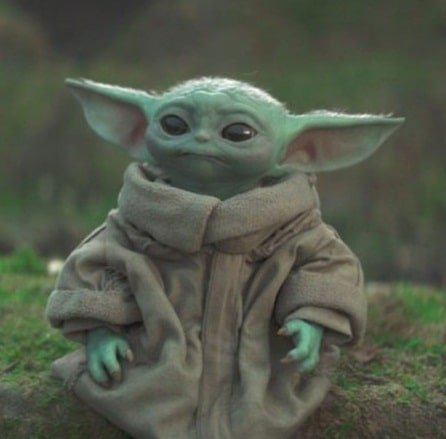
A youngling of Yoda’s species, Grogu, was present at the Jedi Temple during the attack but was rescued, though the trauma of the event caused him to lose memories of what had happened.
Several other Jedi Masters, including Oppo Rancisis, Coleman Kcaj, Ka-Moon Kholi, and Selrahc Eluos, were confirmed by the Empire to have survived Order 66, but they remained so well hidden that the Empire was unable to track them down. Cal Kestis also survived the purge, thanks to the sacrifice of his master, Jaro Tapal, who defended him from the clones and gave Kestis the chance to escape into hiding. According to legend, Kira Vantala was another Jedi who survived the purge, surprising the Grand Inquisitor when she confronted him on the planet Gaaten in an effort to stop the abduction of Force-sensitive orphans.
7.2 Clone Troopers After Order 66
Most members of the irregular unit known as Clone Force 99 were immune to Order 66 due to genetic mutations or implanted cybernetics. However, Crosshair, one of their members, had his biochip’s effects amplified by the Empire, which enhanced his obedience. Despite this, the rest of the “Bad Batch” deserted the Empire just days after its formation. Crosshair later had his biochip removed but still chose to remain loyal to the Empire, believing that his squad had abandoned him to his fate.
Rex, who had become a fugitive from the Empire—officially declared dead by the regime—eventually reunited with Commanders Wolffe and Gregor, both of whom had their chips removed as well. Sometime after Order 66, Rex made contact with the Bad Batch and discovered they hadn’t removed their chips, as Tech had concluded they weren’t a danger.
However, Wrecker, one of the squad members, had been experiencing persistent headaches, which worsened after sustaining head injuries, indicating his chip was still a threat. Rex insisted they meet him on Bracca to remove their chips. While reactivating the medical bay of a downed Jedi Cruiser, Wrecker’s chip suddenly activated, causing him to attack his squad and nearly harm the child clone Omega. She tried to talk him down, but Wrecker was struggling under the chip’s control. Rex stunned Wrecker just in time, and afterward, the entire squad’s chips were successfully removed, eliminating the threat to them.
Despite the biochips enforcing obedience to the Empire’s orders, over time, a growing number of clones began to question the Empire’s actions. The chips’ influence began to wear off with time. Unbeknownst to him, Clone Captain Howzer overcame his chip’s control and encouraged other clones in his squad to defy the Empire. Similarly, Commander Cody eventually questioned whether the Empire was truly improving the galaxy and ultimately deserted the regime.
During the Empire’s occupation of Mon Cala, Jedi Padawan Ferren Barr hid in Dac City and served as an advisor to King Lee-Char. Barr took on several acolytes, including Nipaltoo, Orvek, Rebb, Stell, Daren, and Verla.
When confronted by the Inquisitors and their troopers, Barr realized that the troopers were newer clones who hadn’t yet had their biochips activated. Revealing them to be former Jedi, Barr used a mind trick to force the troopers to execute Order 66 and attack the Inquisitors. In the ensuing battle, the Tenth Brother—formerly Jedi Master Prosset Dibs—was killed, and the Ninth Sister had her leg severed by the Sixth Brother, who betrayed her in an attempt to escape.
8. Legacy
For nearly two decades, the Empire expanded its reach without facing significant opposition from the Jedi. However, approximately five years before the Battle of Yavin, surviving Jedi began to actively support rebel cells across the galaxy.
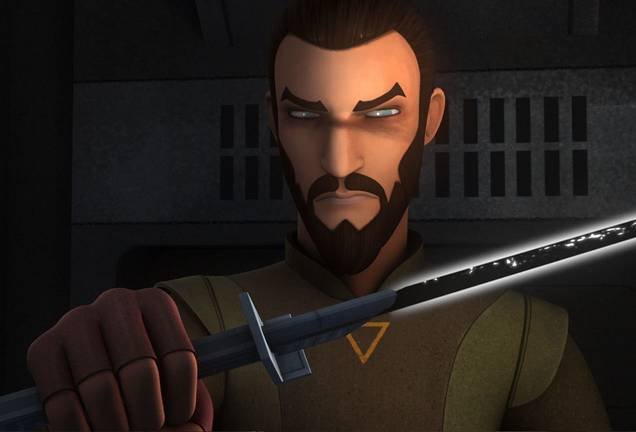
Among these survivors were Kanan Jarrus, who joined the Spectres, and Ahsoka Tano, who assisted a larger network of rebel cells. Years later, Obi-Wan Kenobi came out of exile and began training Luke Skywalker as a Jedi Knight, hoping that Luke would be the one to defeat Darth Vader and Emperor Palpatine. Kenobi was eventually killed by Vader aboard the Death Star, leaving Luke to be trained by Yoda, one of the last known surviving Jedi. Luke trained with Yoda on Dagobah before confronting Vader. He returned to Yoda shortly before the Jedi Master’s death.
Following Yoda’s passing, Luke became the last of the Jedi and set out to confront Vader once more, having learned the truth that Vader was his father. During the Battle of Endor, Luke rejected Emperor Palpatine’s attempt to turn him to the dark side and succeeded in redeeming his father, Anakin Skywalker, who killed Palpatine. In doing so, Anakin fulfilled the prophecy of the Chosen One, bringing balance to the Force and ending the Sith’s rule. Through his actions, Luke became the first new Jedi Knight in a generation, ushering in the return of the Jedi.
Thirty years later, Luke’s nephew, Ben Solo—who had taken the name Kylo Ren—brought about a similar tragedy, leading Luke to exile himself at the First Jedi Temple on Ahch-To.
Fifty years after the Clone Wars, Kix, who had been frozen in stasis, was awakened during the Hunt for Dooku’s Treasure. Discovered by Sidon Ithano’s pirate crew, Kix, no longer able to save the Republic or the Jedi, decided to join the pirates.
Around 30 ABY, the former Jedi Padawan Naq Med learned that the Jedi were no longer being hunted, allowing him to die peacefully. He passed on his lightsaber and Jedi robes to his grandson, Karr Nuq Sin. Sometime after the Battle of Crait in 34 ABY, pirate Hondo Ohnaka recounted the events of Order 66 in his book, Galactic Explorer’s Guide. He noted how the clones had turned on their Jedi Generals and shared that Jedi Masters Yoda and Luminara Unduli had survived, though Unduli was later captured by the Empire and executed.
Tony Allen is a writer for LightsabersBlog.com, a website focused on everything related to lightsabers. Tony grew up in Austin, Texas, and went on to study Mechanical Engineering at the University of Texas. Passionate about science fiction and fantasy, Tony has always been deeply involved in hobbies like tabletop RPGs, sci-fi novels, miniature painting, and crafting. This love for creative pursuits drives Tony to write about lightsabers in a way that ignites the imagination of fans around the world.

